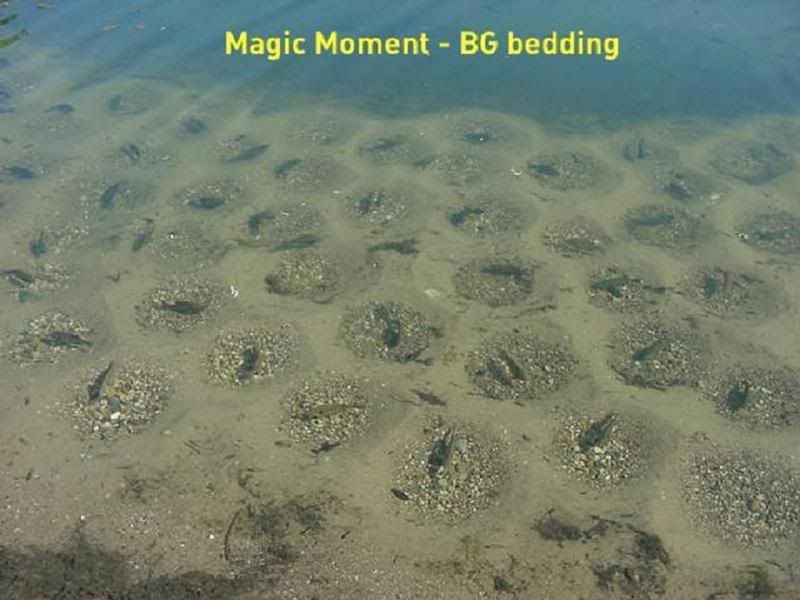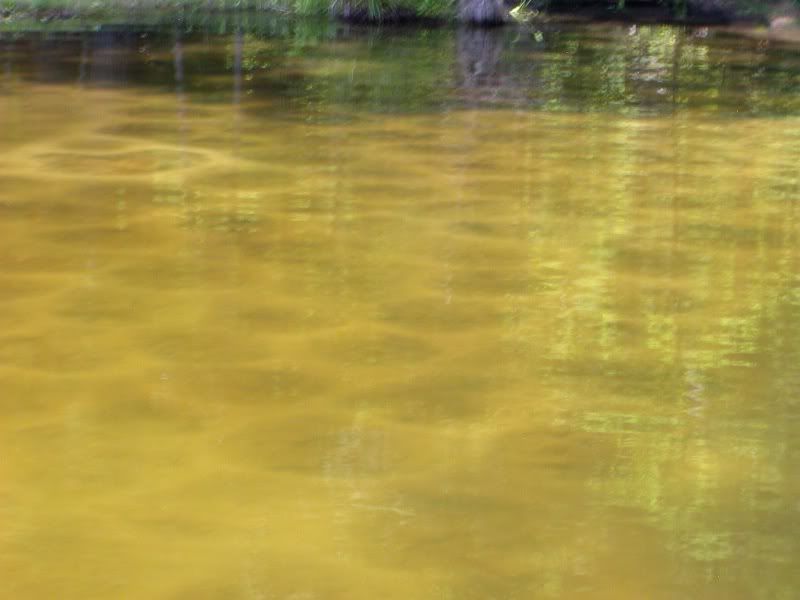Mixed road gravel a little bigger than pea gravel is best.
8 - 32 mm is optimum
See this thread.
http://forums.pondboss.com/ubbthreads.php?ubb=showflat&Number=199269&page=1Role of Male Parental Care in Survival of
Larval Bluegills
MARK B. BAIN AND LOUIS A. HELFRICH
Department of Fisheries and Wildlife Science•
Virginia Polytechinc Institute and State U niversity
Blacksburg, Virginia 24061
Abstract
Mortality of larval bluegills Lepomis macrochirus from predation was measured in 56 nests
guarded by males and 21 nests from which the male guard was removed. Mortality was s ignificantly greater in unguarded nests(median= 68%)than in guardian nests (median= 14%).Fish
traps placed in unguarded nests captured significantly more predators than traps placed in
guarded nests. Bluegills( 3-12 cm total length)w ere the most abundant nest predators Pumpkinseed Lepomis gibbosus (7• -11 cm),largemouth bass M icropterus salmoides(4- 5 cm),and whitefin
shiners Notropis niveus(5 -6 cm) also were nest predators. Nest preparation by male bluegills
exposed coarse gravel( 8-32 mm diameter)and pebbles(3 2-64 mm) in nest substrate and removed particles smaller than 2 mm. Particles larger than 8 mm provided suitable interstitial
space to accommodate bluegill larvae. Survival of larvae was directly correlated with the proportion
of coarse substrate in the nest.
Some points of interest:
Our data from
Virginia implicated juvenile bluegills as the major
predators on bluegill larvae, followed in importance
by pumpkinseed. Dominey (1981)
drew the same conclusions from a New York....
In addition to direct protection afforded larval
bluegills by nest-guarding males, nest preparation
by the male parent influenced survival
of larvae in Lake Caroline. The availability of
suitable nesting substrate has been recognized
as a major factor affecting reproductive success
of centrarchid fishes (Breder 1936; Kramer and
Smith 1962; Muncy et al. 1979).
In laboratory observationss,
coarse particles provided suitable interstitial
space to accommodate yolk-sac bluegill larvae.
That coarse substrate may function as protective
shelter for larvae was supported by field
data: ....
Although
other factors undoubtedly influence
mortality of tested larvae, our data suggest that
predation, particularly intraspecific predation
(cannibalism), can be a major cause of early
bluegill mortality.
Fishshocker
Junior Member
Registered: 20/03/06
Posts: 4
Loc: Ackerman, MS New to this forum, but let me put my 2 cents in. Have been placing gravel to enhance spawning for warmwater fish, mostly Bream/Bass for 25 years and this is what I have observed: A. Bream prefer gravel as a spawning substrate. Why gravel?? Gravel allows for water to circulate throughout the egg mass as the guardian male fans the nest. This in turn carries the oxygen necessary for the survival of the individual eggs. Better circulation = better hatch from each nest = better fisheries dynamics. Washed pea gravel is probably best, but also the most expensive. Washed river rock #57 grade is also good and less costly. Washed rounded rock allows for better circulation. Sand, "white" rock, lime rock all tend to "lock up" and restrict the circulation of water/oxygen to the bottom of the egg mass necessary for egg survival in that part of the egg mass.
B. Thickness of the layer of spawning gravel will thin or "pancake" out after several years and eventually becomes useless. The mechanical action of fanning the beds makes the gravel migrate out over time. Counter this by boxing in the gravel with 1x12 inch cypress boards, filling in the outside of the boards with dirt. Looks like a shaved off pitcher's mound with gravel recessed in the ground. Dirt shoulders keep the hooks from snagging as easily.
C. Avoid sloping ground, level sites have the greatest use.
D. Dispurse the sites according to depth and aspect to allow for greater overall use throughout the spawning season.
E. Avoid locating sites adjacent to incoming streams, or tribs, they end up being silted in.
Just my 2 cents, hope this helps.
See pics below.








